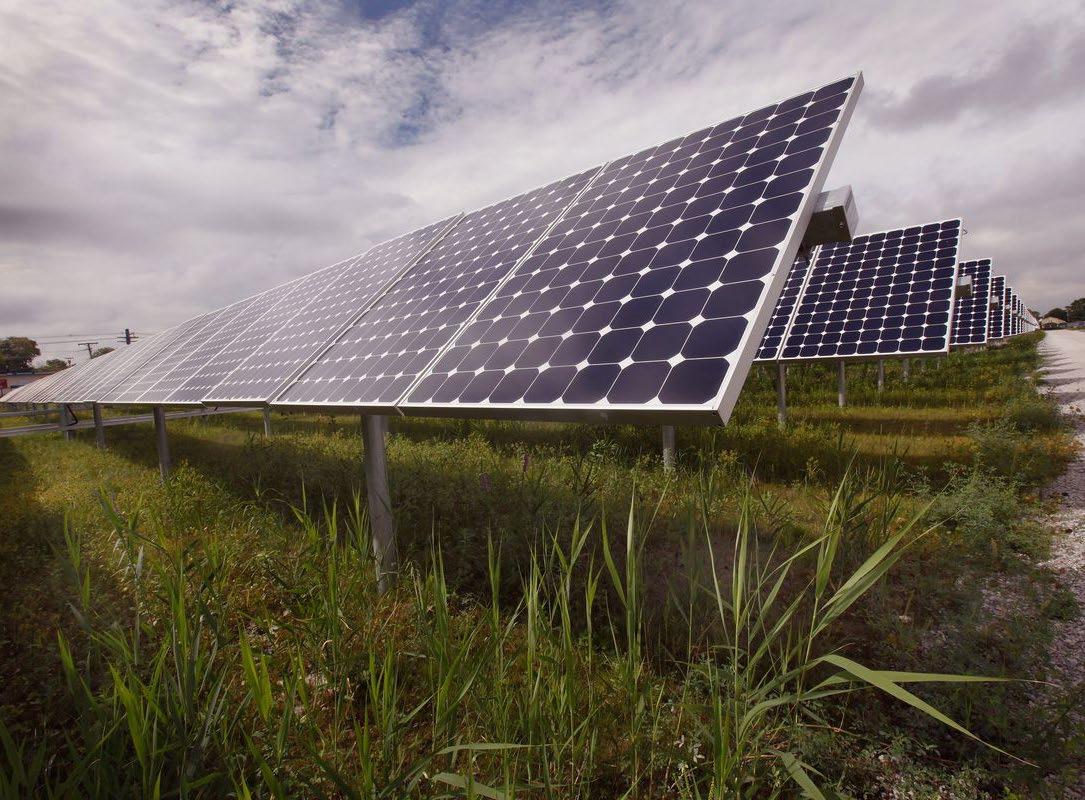
3 minute read
SOLAR PANELS ON AGRICULTURAL LAND ARE SUITABLE FOR WILDLIFE HABITAT
et latest articles and stories on World at Latest LY. Australia's renewable energy transition has fuelled the construction of dozens of large-scale solar power projects (PLTS). Although this trend reduces the dependence of Kangaroo Country on fossil fuels, the construction of PLTS also increases the need for land to install solar panels. Melbourne, Feb 20 (The Conversation) Australia's renewable energy transition has fuelled the construction of dozens of llarge-scale solar power projects (PLTS). Although this trend reduces the dependence of Kangaroo Country on fossil fuels, the construction of PLTS also increases the need for land to install solar panels. The same trend has also occurred in Indonesia, which has begun to boost the construction of large-scale PLTS. PLTS projects are mostly located in rural areas. A number of parties are concerned that land use for PLTS has the potential to erode agricultural production and disrupt wildlife habitats. Actually there is a way to expand the PLTS infrastructure wiithout disturbing humans or other creatures. For example, thre is an agrivoltaic PLTS project that operates between agricultural crops or livestock. So, how is the concept of convoltaic PLTS – a combination of efforts to conserve biodiversity with solar energy? My recent research examines whether PLTS can be used to support the conservation of native species in an area. As a result, I found solar panels to be a useful habitat for wildlife, as well as beneficial for soil fertility and farmers. New house Our wild landscapes continue to diminish. In Australia, protected areas such as national parks cover only 9 per cent of the total area. Meanwhile, in Indonesia, the number of protected areas on land is only equivalent to 12.2 per cent of the total area. Many of the trees in the farm area were cut down to become pasture for livestock. This means that wild animals that depend on trees have lost most of their habitat. For this reason, we must provide new places so that wild animals can find food, rest, shelter, and breed. My research examines whether PLTS areas located on agricultural land or livestock can also be used as wildlife habitat.I conducted surveys and investigations using camera traps (hidden cameras) to identify plants and animals between solar panels. I also noted how long it took them to colonise, and what steps needed to be taken to support them. My research results also try to come up with a new term for this dual land use: convoltaic. I also cite other studies that conclude the benefits of PLTS for conservation. Of course we still need further research on this matter. The three-dimensional structure of the solar panels (and the supports) adds to the richness of the structure in a landscape of agricultural land. This power plant also functions as a place for animals to take shelter from predators, just like artificial reefs in lakes and oceans. Solar panels can also be a great place to house animals. PLTS infrastructure also creates a mosaic of sunlight and shadows. This condition allows the area around the PLTS to become a micro habitat for plants and animals. Studies conducted in Europe show that largescale PLTS can increase the biodiversity and number of plants, grasses, butterflies, bees and birds. The vegetation that grows between the solar panels also serves as a route for animals to travel , a breeding ground, as well as shelter for wild animals. Good management is the key My study also recommends management strategies to optimize the benefits of solar panels for wildlife. Land managers must provide a variety of flowering plant species to stimulate the arrival of pollinating insects (pollinators). The grass that grows between the solar panels should also not be trimmed frequently or too short. Pollinating insects prefer tall vegetation for foraging. Also don't be too high so as not to block the solar panels from absorbing sunlight. If possible, reduce the use of herbicides or other chemicals. PLTS must also be connected to other vegetation areas, such as hedges or tree rows. The goal is for wildlife to move from the PLTS area to other habitats. Land managers who com bine PLTS with wildlife habitat can also take a number of advantages. They can reap income from obtaining environmental credits through carbon sequestration projects and increasing biodiversity. Landowners can also increase soil fertility by increasing the number of pollinating insects. They can also provide habitat for birds through nest boxes or perches to control insect populations. Even so, we need more studies to understand the various potentials of this convoltaic PLTS. Step forward We already know the benefits of renewable energy in reducing greenhouse gas emissions. Now, we need more research to see the benefits of PLTS to wildlife. We also lack research on how to best place, configure and manage PLTS to boost biodiversity. Collaboration between industry, land managers and experts is needed so that clean energy production and conservation can go hand in hand.
Source: latestly.com
Advertisement







